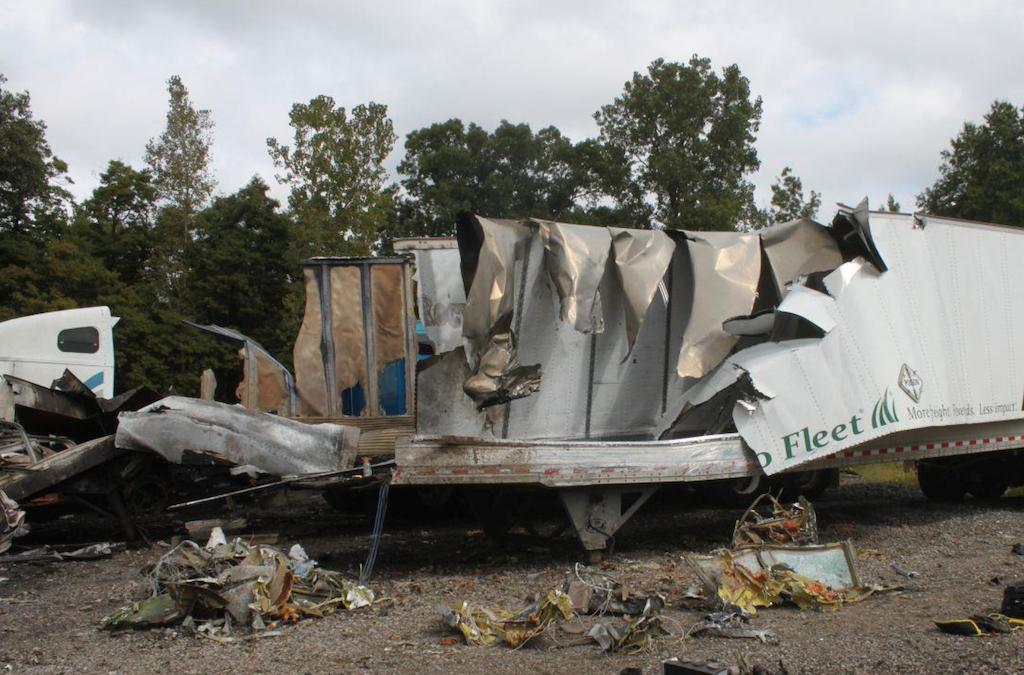
A 1950’s-era Convair 440 transport airplane descended into trees a half mile short of the runway at Toledo Express Airport (TOL) in Monclova, Ohio, on Sept. 1, 2019. After clipping the treetops, the old airplane slammed into a truck parking lot, its propellers slicing through a tractor trailer, before sliding to a halt and erupting into flames.
There was no question that the crew allowed the airplane to get too low on the final approach. What was more difficult to establish was why an experienced crew would let that happen.
The NTSB decided the accident was caused by the crew’s fatigue. There was certainly support for that conclusion. However, there was another commonly overlooked factor at work that might have contributed to the accident as well.
The 14 CFR Part 125 nonscheduled cargo flight originated at Laredo International Airport, Texas (LRD) at 18:38 central time. After a fuel stop at Millington/Memphis airport (NQA), it was airborne again at 23:14, destined for Toledo.
The flight maintained a cruise altitude of 7,000 ft. until 39 nm southwest of TOL. The flight crew began a gradual descent and was handed off to TOL tower. The tower cleared the flight to descend to 3,000 ft. and then to 2,100 ft. before clearing it for a visual approach to runway 25. At 02:36 the tower cleared the flight to land.
The night sky was clear and visibility was reported to be 10 mi. The pilots flew a gentle left arc from their northeasterly heading to a westerly heading to align themselves with the runway. The crew reported no malfunctions or anomalies. Everything seemed to be proceeding normally.
As the airplane lined up with Runway 25, it continued to slow and descend. It passed through what would be a normal glideslope altitude without comment from either the crew or the tower. When the first tree strike occurred, the crew was either too surprised or too somnolent to make an emergency radio call.
Both pilots perished in the crash and the airplane was destroyed.
The Investigation
Because there were two fatalities and the involvement of a transport category airplane, the initial NTSB launch was considered a major accident investigation. Assisting the investigator in charge were representatives from engine manufacturer Pratt and Whitney, Convair Technical Support and the Transportation Safety Board of Canada (TSB), as well as the FAA Flight Standards division. The investigation was later downgraded to a limited (Class 3) investigation, and the eight-page final report was issued three years almost to the day after the accident. The investigation was delayed in part because of the Covid 19 pandemic.
The Convair CV-440F, registered as N24DR, was an airliner originally delivered to Scandinavian Airline System (SAS) in 1957. After 12 years of service at SAS, it was sold and then passed through the hands of 10 owners before arriving at the last owner, Ferreteria e Implementos San Francisco, in 2000. The owner of that company was the accident copilot.
The airplane was carrying automotive wiring harnesses on its last flight, and it had been used to carry auto parts north from Laredo for years. Flight logs showed the airplane had flown 28 trips in 2017, 36 in 2018, but only 10 in 2019.
Airworthiness investigators arrived on the scene the day after the accident. They remained there for four days, documenting the wreckage. Although the impact and fire damage were severe, they were able to establish that there was no inflight breakup or any systems or structural failures prior to ground impact.
The landing gear was extended; the position of the flaps could not be determined. Propeller strike marks on a trailer at regular 38-in. intervals were indicative of engine power being produced.
There were no flight data or cockpit voice recorders. Investigators recovered a few instruments along with an Appareo Stratus 2S portable ADS-B receiver and an Apple iPad, and these were sent to the NTSB’s materials lab. Unfortunately, the lab was unable to recover any useful information from the devices.
The aircraft’s Pratt & Whitney R2800-52W “Double Wasp” radial engines were fitted with three-bladed Hamilton Standard propellers. The heavily burned-out left engine was lifted from the wreckage by a tow truck. The right engine had broken free and was recovered in the parking lot beyond the main wreckage. Both were placed in shipping crates and delivered to a teardown facility. The props were shipped to a separate facility and were later inspected by investigators. All evidence was consistent with the engines operating normally at the time of the crash.
Runway 25 at TOL had an ILS/DME approach with a 3-deg. glideslope; there was a 4-light precision approach path indicator (PAPI) system on the left side of the runway as well. The runway had centerline lights and a 1,400-ft. Medium Approach Lighting System with Runway Alignment Indicator Lights (RAIL). Airport information noted there were 75 ft trees 2600 ft. from the runway and left of centerline. The airplane struck trees at about 0.65-mile northeast of the runway threshold, and the initial strikes were about 55 ft. above ground level.





